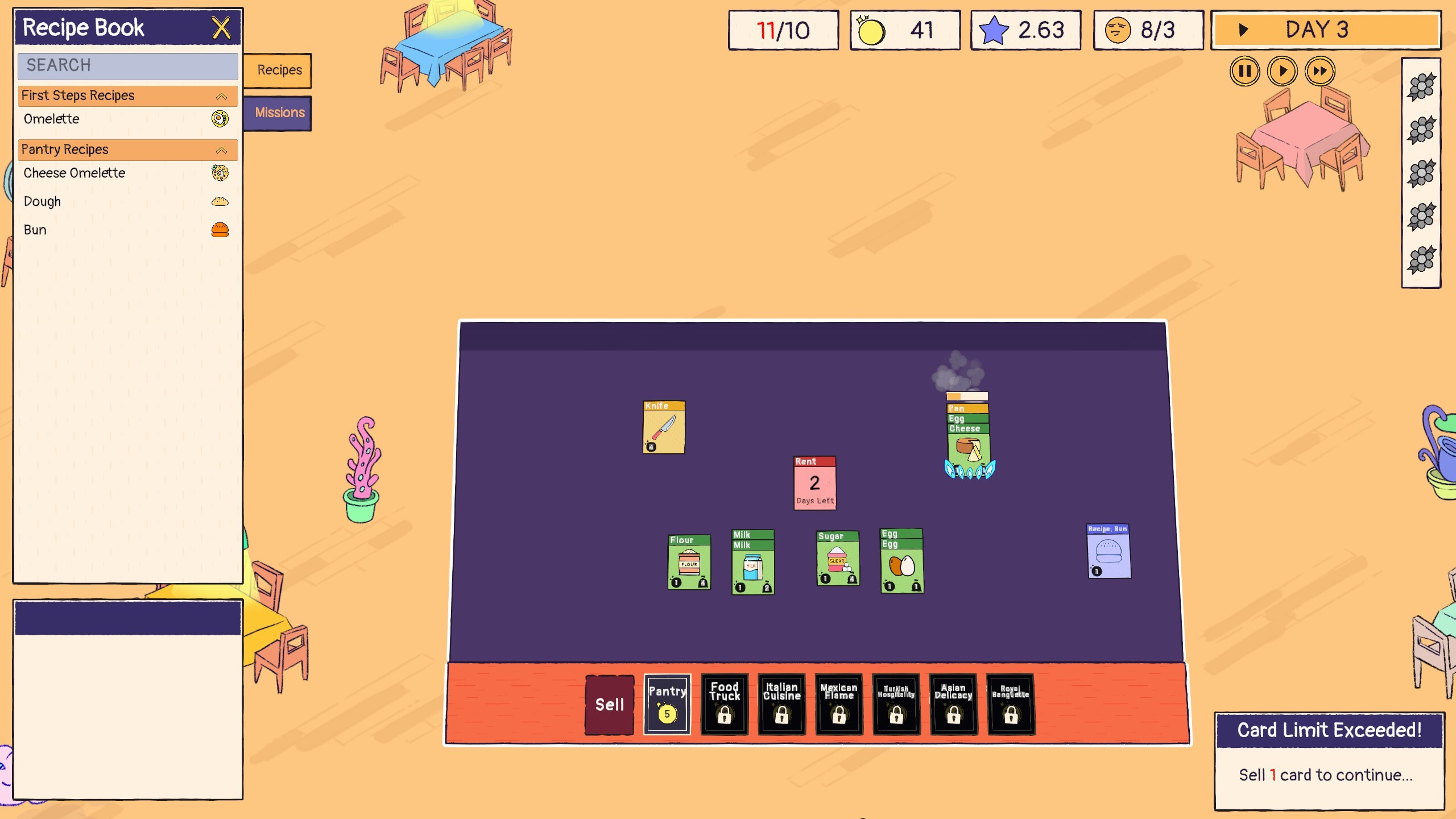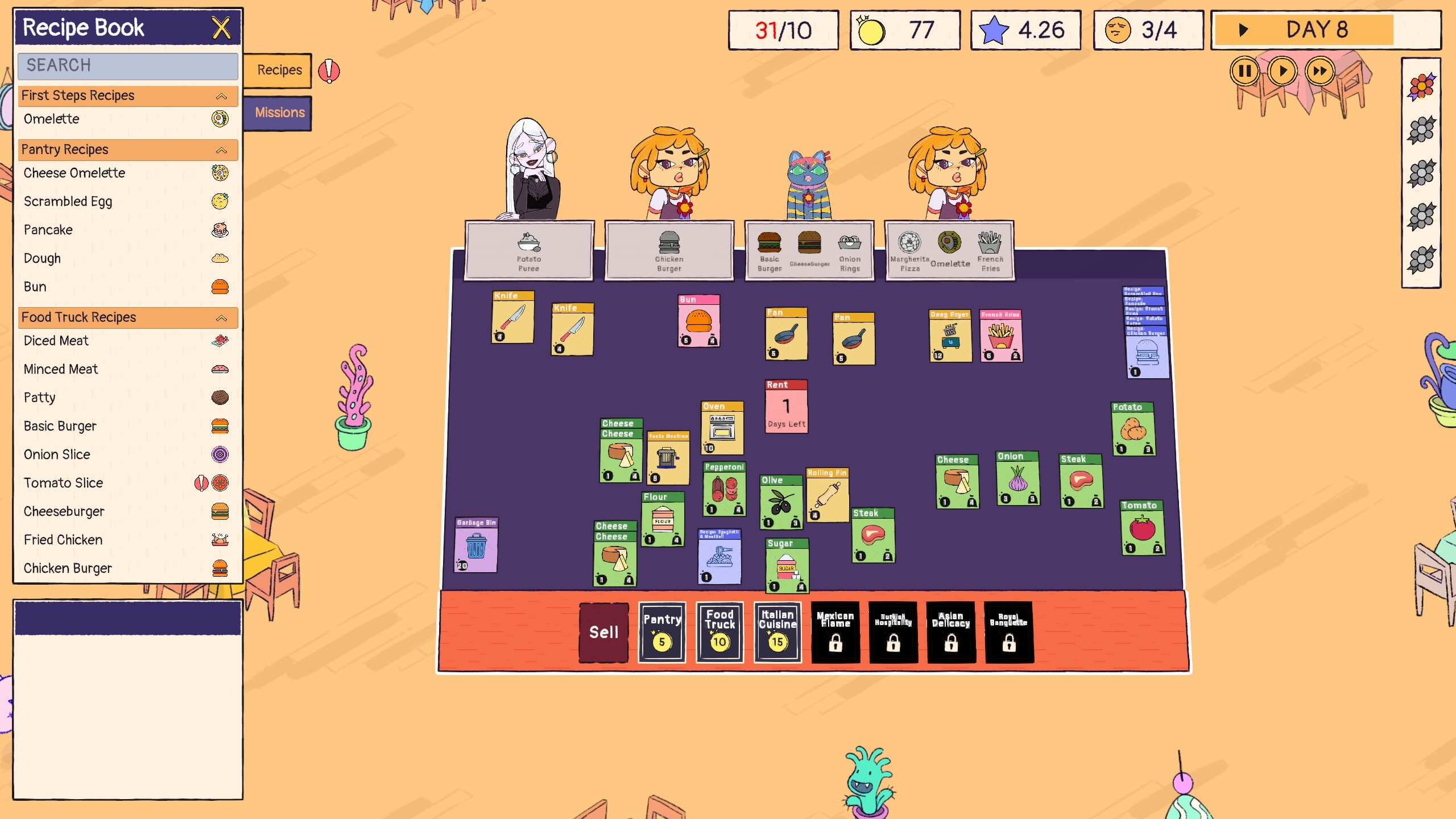I’ve been spending my free time sifting through all the new demos showcased in this month’s Steam Next Fest. And while there’s a whole host of incredible multiplayer games that are right up my alley I’ve landed on Sizzle and Stack, an infuriating, stress-inducing cooking card game.
It all starts slowly. At first there are just a couple of dishes for you to learn and cook, mostly revolving around all the different ways you can make eggs. There are fried eggs, scrambled eggs, cheesy eggs—so many eggs. When I first started cooking, remembering all of this was way more overwhelming than it should have been.
I tried to follow culinary commandments like keeping my workspace clean as best as I could, but it quickly all became too much and descended into madness, with potatoes in the fridge, flour in the deep fryer, and sliced onions scattered around everywhere.
To cook certain dishes you need to learn the recipe and then stack ingredients on top of one another. You can learn recipes by opening tons of ingredient packs and just hoping one pops out like a super-rare shiny, but the way I do it is just by stacking everything on top of each other in different variations and hoping I find something that works. It’s a real caveman-makes-fire moment.
Dishes get more complex and need more components the longer your run lasts, with new cuisines like street food or Italian being introduced after you pass certain markers. And with new dishes comes the need for new ingredients.
You can buy ingredient packs for a few coins, which are taken from your restaurant profits, and this is the only way you can get produce to use in your kitchen. The only problem is that there’s a random assortment of food inside, so you never really know what you’re going to get.
At one point I spent about five minutes and lord knows how much money opening food truck ingredient packs desperately trying to secure some steak. I had three people who wanted burgers and all I seemed to get in the packs was a shedload of onions and more chicken than even KFC would need.
This is the part that can be frustrating: sifting through tomatoes and chicken wings while you have a bunch of angry, hungry customers waiting for a burger or some pancakes and the clock’s ticking. And if you can’t please enough customers then your run ends, and you have to start over again. Back to the eggs.
But as it is with most roguelikes, you tend to learn more from losing than anything being successful. The more times I was sent back to be an egg chef the better I got at it, and then in turn I memorised some more recipes and learned how to efficiently clear my countertop. The more I play the better I get. First step a fried egg, next step carbonara, although I still don’t know how to make pasta and, truthfully, the machine scares me.




